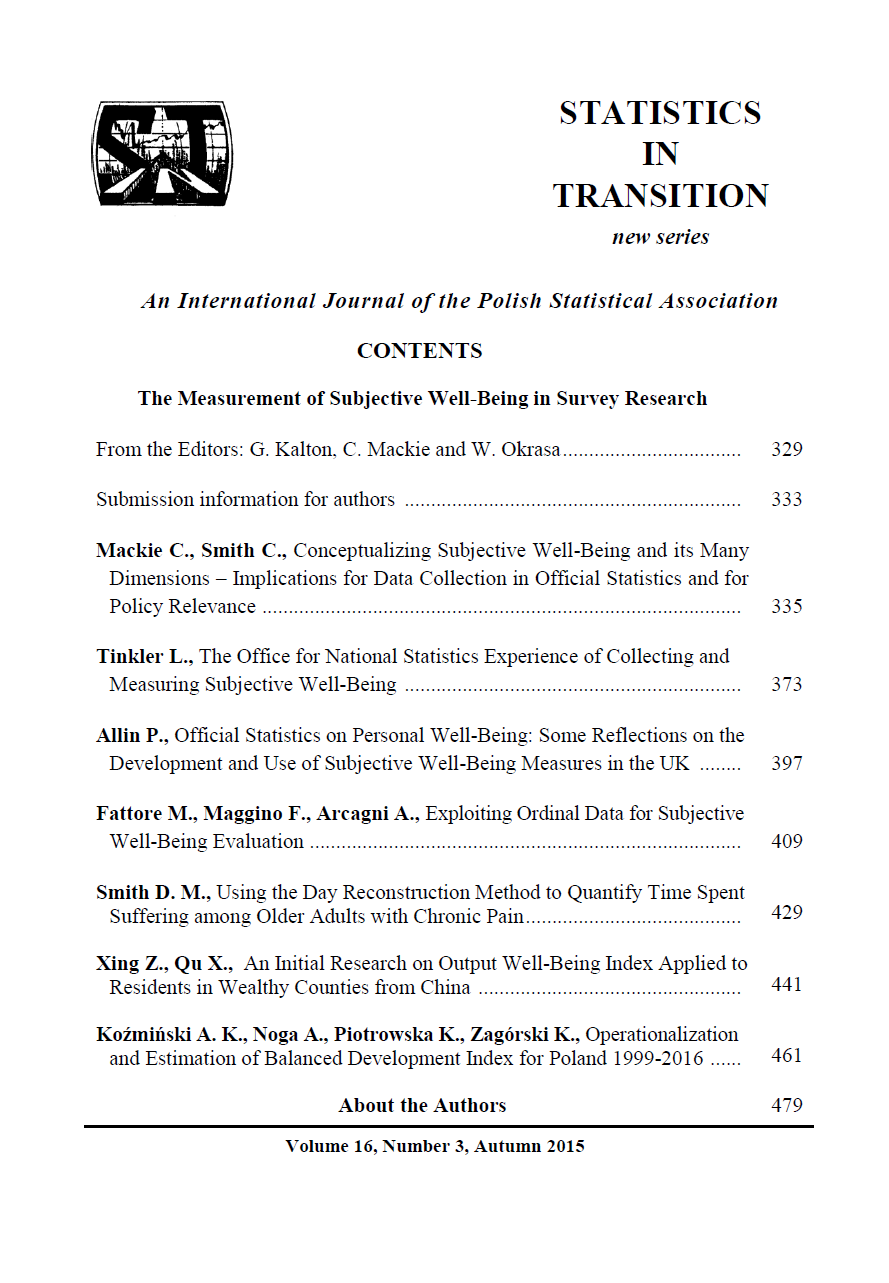ARTICLE
ABSTRACT
The evaluation of subjective well-being, and of similar issues related to quality of life, is usually addressed through composite indicators or counting procedures. This leads to inconsistencies and inefficiency in the treatment of ordinal data that, in turn, affect the quality of information provided to scholars and to policymakers. In this paper we take a different path and prove that the evaluation of multidimensional ordinal well-being can be addressed in an effective and consistent way, using the theory of partially ordered sets. We first show that the proper evaluation space of well-being is the partially ordered set of achievement profiles and that its structure depends upon the importance assigned to well-being attributes. We then describe how evaluation can be performed extracting information out of the evaluation space, respecting the ordinal nature of data and producing synthetic indicators without attribute aggregation. An application to subjective well-being in Italy illustrates the procedure.
KEYWORDS
subjective well-being, multidimensional ordinal data, partial order
REFERENCES
ALKIRE, S., FOSTER, J., (2011). Counting and multidimensional poverty measures. Journal of Public Economics, 95, pp. 476–487.
ANNONI, P., DIJKSTRA, L., (2013). EU Regional Competitiveness Index - RCI 2013. RCI 2013, JRC Scientific and Policy Reports. Luxembourg: Publications Office of the European Union.
CERIOLI, A., ZANI, S., (1990). A Fuzzy Approach To The Measurement Of Poverty. In: Dagum, C., Zenga, M. Income and Wealth distribution, Inequality and Poverty. Berlin Heidelberg: Springer-Verlag. pp. 272–284.
DAVEY, B. A., PRIESTLEY, B. H., (2002). Introduction to lattices and order. Cambridge: Cambridge University Press.
FATTORE, M., BRUEGGEMANN, R., OWSIŃSKI, J., (2011). Using poset theory to compare fuzzy multidimensional material deprivation across regions. In: Ingrassia S., Rocci R. and Vichi, M. New Perspectives in Statistical Modeling and Data Analysis. Berlin: Springer-Verlag.
FATTORE, M., MAGGINO, F., COLOMBO, E., (2012). From composite indicators to partial orders: evaluating socio-economic phenomena through ordinal data. In: Maggino F., Nuvolati G. Quality of life in Italy: researches and reflections. Berlin: Social Indicators Research Series.
FATTORE, M., ARCAGNI, A., (2014). PARSEC: an R package for poset-based evaluation of multidimensional poverty. In: Bruggemann R., Carlsen L. and Wittmann J. Multi-Indicator Systems and Modelling in Partial Order. Berlin: Springer.
FATTORE, M., ARCAGNI, A., BARBERIS, S., (2014). Visualizing Partially Ordered Sets for Socioeconomic analysis. Revista Colombiana de Estadistica, 34(2), pp. 437–450.
FATTORE, M., MAGGINO, F., (2015). A new method for measuring and analyzing suffering – Comparing suffering patterns in Italian society. In: Anderson R. E. World Suffering and the Quality of Life. New York: Springer.
MADDEN, D., (2010). Ordinal and cardinal measures of health inequality: an empirical comparison. Health Economics, 19, pp. 243–250.
NEGGERS, J., KIM, S. H., (1998). Basic posets. Singapore: World Scientific.
QIZILBASH, M., (2006). Philosophical Accounts of Vagueness, Fuzzy Poverty Measures and Multidimensionality. In Lemmi A. and Betti G. Fuzzy Set Approach to Multidimensional Poverty Measurement. New York: Springer.
SEN, A., (1992). Inequality reexamined, Harvard University Press
